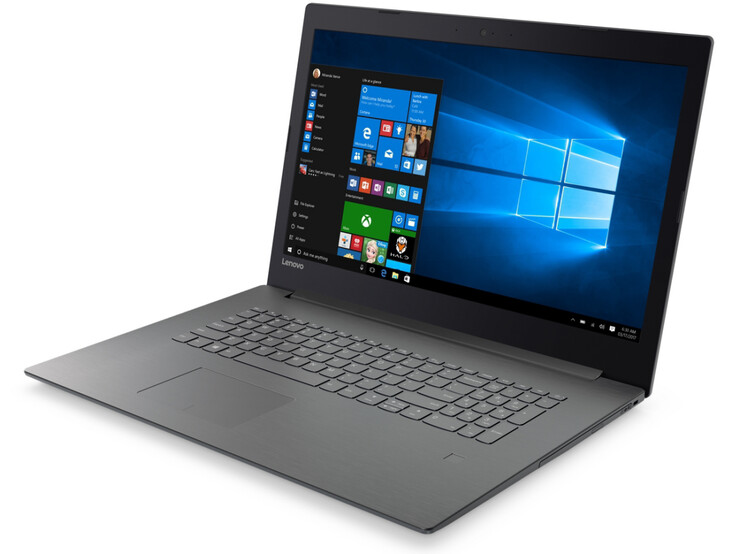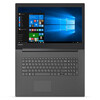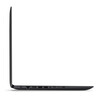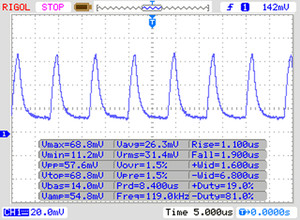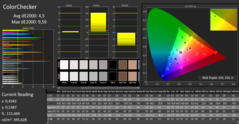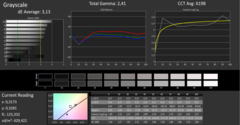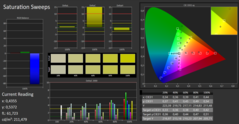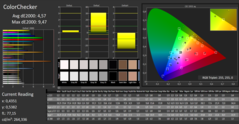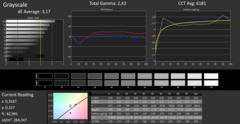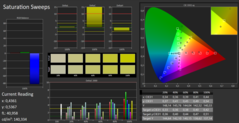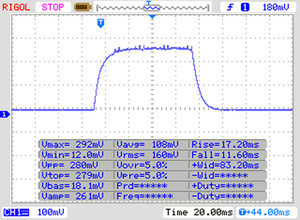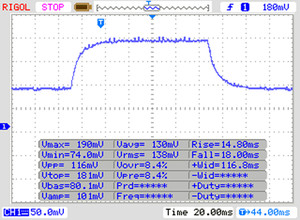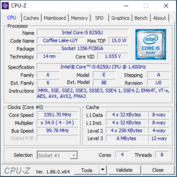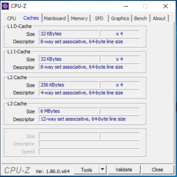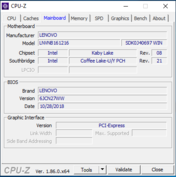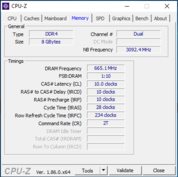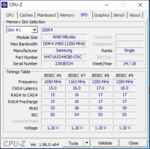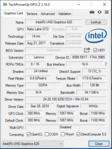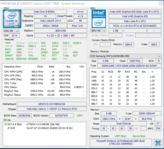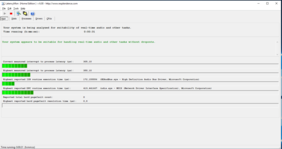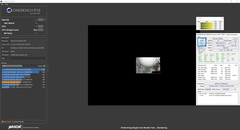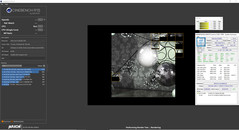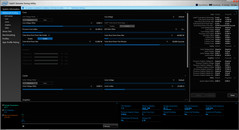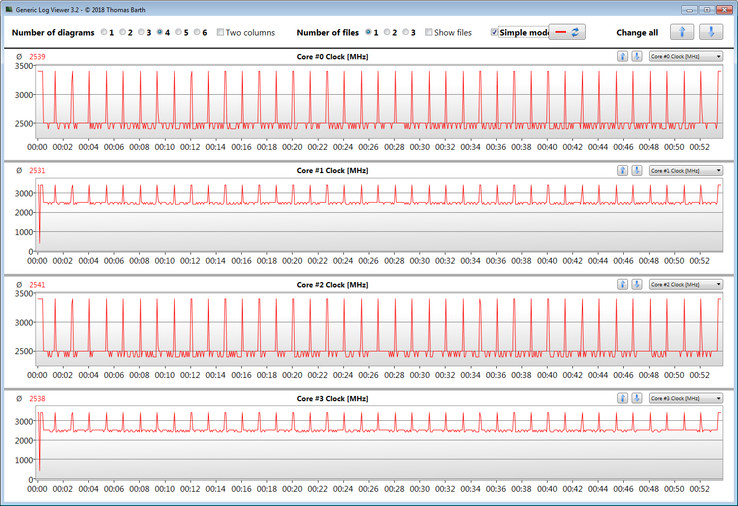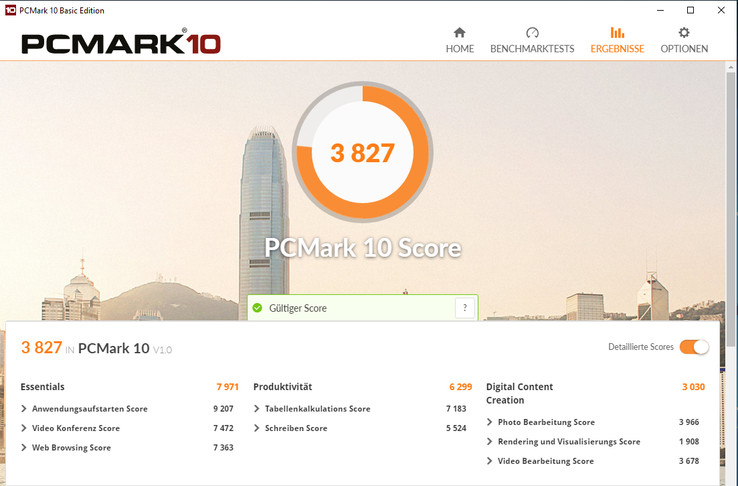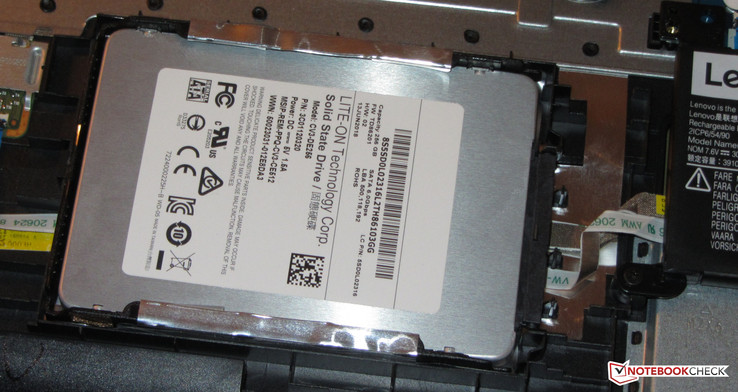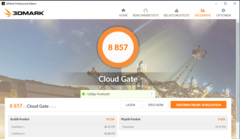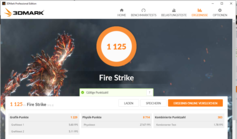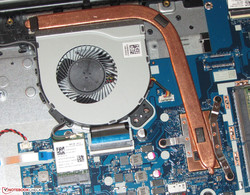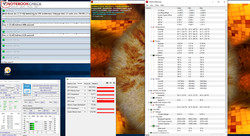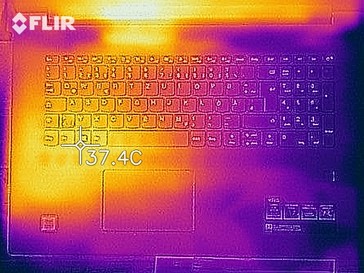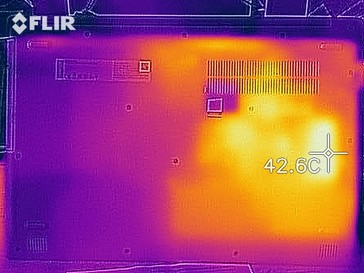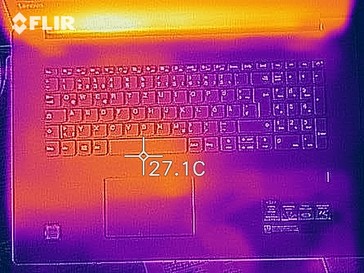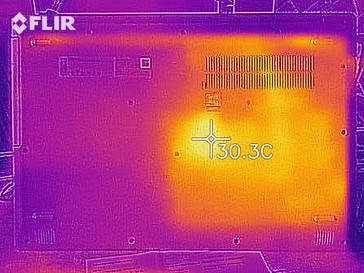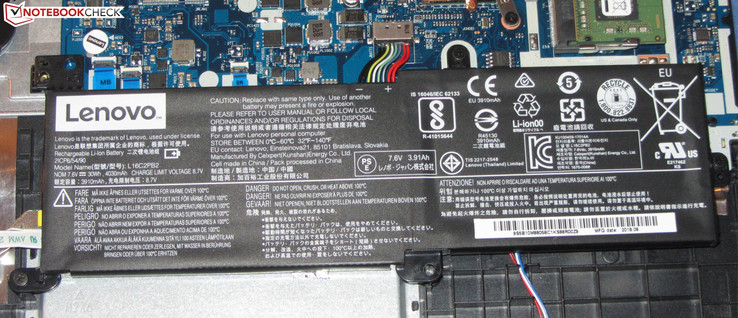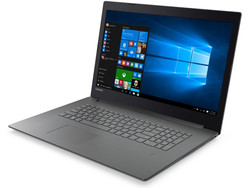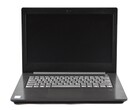Lenovo V320-17IKB (i5-8250U, SSD, FHD) Laptop Review

Lenovo’s 17.3-inch notebook is intended primarily for professional users. However, both the price and the hardware also make it attractive for casual users. The Lenovo V320-17IKB is no stranger to us. We reviewed a model from this series in 2017. Our current review device is identical to the sibling model, except for the fact that Lenovo has replaced the dual-core CPU with a quad-core processor. Read our review to learn what impact this has on performance. Competing devices include: The HP 17 and the Asus VivoBook 17 X705UA.
Because both models are identically built, we shall skip the sections that deal with the case, connectivity, input devices and the speakers. You can find all the appropriate information in the review of the V320-17IKB 81AH0002GE.
| SD Card Reader | |
| average JPG Copy Test (av. of 3 runs) | |
| Average of class Office (8 - 82.7, n=49, last 2 years) | |
| HP 17-ca0013ng (Toshiba Exceria Pro SDXC 64 GB UHS-II) | |
| Asus VivoBook 17 X705UA-BX022T (Toshiba Exceria Pro SDXC 64 GB UHS-II) | |
| Lenovo V320-17IKB 81AH0002GE (Toshiba Exceria Pro SDXC 64 GB UHS-II) | |
| Lenovo V320-17IKB-81CN000MGE (Toshiba Exceria Pro SDXC 64 GB UHS-II) | |
| maximum AS SSD Seq Read Test (1GB) | |
| Average of class Office (25 - 90.5, n=43, last 2 years) | |
| Asus VivoBook 17 X705UA-BX022T (Toshiba Exceria Pro SDXC 64 GB UHS-II) | |
| HP 17-ca0013ng (Toshiba Exceria Pro SDXC 64 GB UHS-II) | |
| Lenovo V320-17IKB 81AH0002GE (Toshiba Exceria Pro SDXC 64 GB UHS-II) | |
| Lenovo V320-17IKB-81CN000MGE (Toshiba Exceria Pro SDXC 64 GB UHS-II) | |
Display - V320 with an IPS screen
The 17.3-inch display of the V320-17IKB has a native resolution of 1920x1080. The brightness (375.3 cd/m²) and contrast ratio (1010:1) are quite good. What we have here is the same IPS panel that we saw in our review of the sibling model. This panel has very good viewing angles. That being said, our display measurements differ slightly. Two similarly built screens are never 100 % identical.
Unfortunately, at 90 % brightness and below, the screen exhibits PWM flickering with a frequency of 119000 Hz. Because of such a high frequency, even susceptible individuals should not experience any adverse effects such as headaches and eyestrain.
| |||||||||||||||||||||||||
Brightness Distribution: 82 %
Center on Battery: 414 cd/m²
Contrast: 1010:1 (Black: 0.41 cd/m²)
ΔE Color 4.5 | 0.5-29.43 Ø5, calibrated: 4.57
ΔE Greyscale 3.13 | 0.57-98 Ø5.3
82% sRGB (Argyll 1.6.3 3D)
54% AdobeRGB 1998 (Argyll 1.6.3 3D)
60% AdobeRGB 1998 (Argyll 2.2.0 3D)
82% sRGB (Argyll 2.2.0 3D)
65.4% Display P3 (Argyll 2.2.0 3D)
Gamma: 2.41
| Lenovo V320-17IKB-81CN000MGE IPS, 1920x1080, 17.30 | Lenovo V320-17IKB 81AH0002GE IPS, 1920x1080, 17.30 | Asus VivoBook 17 X705UA-BX022T TN LED, 1600x900, 17.30 | HP 17-ca0013ng IPS, 1920x1080, 17.30 | |
|---|---|---|---|---|
| Display | 3% | -14% | 4% | |
| Display P3 Coverage | 65.4 | 66.5 2% | 51.2 -22% | 67 2% |
| sRGB Coverage | 82 | 84.5 3% | 75.2 -8% | 86.4 5% |
| AdobeRGB 1998 Coverage | 60 | 61.8 3% | 52.9 -12% | 63.2 5% |
| Response Times | 3% | 15% | 7% | |
| Response Time Grey 50% / Grey 80% * | 33 ? | 35 ? -6% | 41 ? -24% | 33 ? -0% |
| Response Time Black / White * | 28 ? | 24 ? 14% | 13 ? 54% | 24 ? 14% |
| PWM Frequency | 119000 ? | 119000 ? 0% | ||
| Screen | -6% | -77% | -10% | |
| Brightness middle | 414 | 412 0% | 237 -43% | 394 -5% |
| Brightness | 375 | 377 1% | 216 -42% | 352 -6% |
| Brightness Distribution | 82 | 83 1% | 82 0% | 83 1% |
| Black Level * | 0.41 | 0.39 5% | 0.58 -41% | 0.35 15% |
| Contrast | 1010 | 1056 5% | 409 -60% | 1126 11% |
| Colorchecker dE 2000 * | 4.5 | 5.04 -12% | 10.78 -140% | 6.08 -35% |
| Colorchecker dE 2000 max. * | 9.59 | 8.84 8% | 19.24 -101% | 10.88 -13% |
| Colorchecker dE 2000 calibrated * | 4.57 | 2.8 39% | ||
| Greyscale dE 2000 * | 3.13 | 5.28 -69% | 13.38 -327% | 7.22 -131% |
| Gamma | 2.41 91% | 2.44 90% | 2.51 88% | 2.48 89% |
| CCT | 6198 105% | 6900 94% | 15051 43% | 7997 81% |
| Color Space (Percent of AdobeRGB 1998) | 54 | 55 2% | 49 -9% | 57 6% |
| Color Space (Percent of sRGB) | 82 | 84 2% | 75 -9% | 86 5% |
| Total Average (Program / Settings) | 0% /
-3% | -25% /
-52% | 0% /
-5% |
* ... smaller is better
Screen Flickering / PWM (Pulse-Width Modulation)
| Screen flickering / PWM detected | 119000 Hz | ≤ 90 % brightness setting | |
The display backlight flickers at 119000 Hz (worst case, e.g., utilizing PWM) Flickering detected at a brightness setting of 90 % and below. There should be no flickering or PWM above this brightness setting. The frequency of 119000 Hz is quite high, so most users sensitive to PWM should not notice any flickering. In comparison: 53 % of all tested devices do not use PWM to dim the display. If PWM was detected, an average of 17900 (minimum: 5 - maximum: 3846000) Hz was measured. | |||
Display Response Times
| ↔ Response Time Black to White | ||
|---|---|---|
| 28 ms ... rise ↗ and fall ↘ combined | ↗ 17 ms rise | |
| ↘ 11 ms fall | ||
| The screen shows relatively slow response rates in our tests and may be too slow for gamers. In comparison, all tested devices range from 0.1 (minimum) to 240 (maximum) ms. » 67 % of all devices are better. This means that the measured response time is worse than the average of all tested devices (21.5 ms). | ||
| ↔ Response Time 50% Grey to 80% Grey | ||
| 33 ms ... rise ↗ and fall ↘ combined | ↗ 15 ms rise | |
| ↘ 18 ms fall | ||
| The screen shows slow response rates in our tests and will be unsatisfactory for gamers. In comparison, all tested devices range from 0.2 (minimum) to 636 (maximum) ms. » 38 % of all devices are better. This means that the measured response time is similar to the average of all tested devices (33.7 ms). | ||
Performance - Well-equipped for the next couple of years
With the V320-17IKB, Lenovo delivers a 17.3-inch business notebook, which offers enough performance for all modern usage scenarios. Our review device can be had for 600 Euros ($683). The prices start at 320 Euros ($364).
Processor
Lenovo has put a quad-core Core i5-8250U (Kaby Lake) CPU inside the 17.3-inch notebook. This is a mid-range ULV processor (TDP: 15 watts) from Intel. It offers more than enough performance for office and web-based applications. It should have no trouble meeting the needs of most users. The processor has a base clock of 1.6 GHz and a boost clock of 3.4 GHz.
In the multi-core section of the Cinebench R15 benchmark, the CPU can run at 3.4 GHz only for a few seconds. After that, the clock rate sinks to 2.5 to 2.6 GHz. In the single-core benchmark, the CPU runs at full speed (3.4 GHz). The processor performs identically both when the laptop is plugged in and when it runs on battery power.
We check if the Turbo boost can be used over an extended period of time by running the Cinebench multi-core benchmark in a continuous loop for 30 minutes. The results sink by 10 % after the first benchmark run and remain consistent thereafter. The Turbo boost is used.
| Cinebench R10 | |
| Rendering Single 32Bit | |
| Average of class Office (3465 - 9351, n=11, last 2 years) | |
| Average Intel Core i5-8250U (5349 - 8356, n=42) | |
| Lenovo V320-17IKB-81CN000MGE | |
| Lenovo V320-17IKB 81AH0002GE | |
| Rendering Multiple CPUs 32Bit | |
| Average of class Office (6611 - 40266, n=11, last 2 years) | |
| Average Intel Core i5-8250U (14148 - 22097, n=42) | |
| Lenovo V320-17IKB-81CN000MGE | |
| Lenovo V320-17IKB 81AH0002GE | |
| Geekbench 3 | |
| 32 Bit Multi-Core Score | |
| Average of class Office (last 2 years) | |
| Lenovo V320-17IKB-81CN000MGE | |
| Average Intel Core i5-8250U (10893 - 13553, n=18) | |
| Lenovo V320-17IKB 81AH0002GE | |
| 32 Bit Single-Core Score | |
| Average of class Office (last 2 years) | |
| Lenovo V320-17IKB-81CN000MGE | |
| Average Intel Core i5-8250U (3148 - 3503, n=18) | |
| Lenovo V320-17IKB 81AH0002GE | |
| Geekbench 4.0 | |
| 64 Bit Multi-Core Score | |
| Lenovo V320-17IKB-81CN000MGE | |
| Average Intel Core i5-8250U (10751 - 13486, n=19) | |
| Lenovo V320-17IKB 81AH0002GE | |
| 64 Bit Single-Core Score | |
| Lenovo V320-17IKB-81CN000MGE | |
| Average Intel Core i5-8250U (3924 - 4243, n=19) | |
| Lenovo V320-17IKB 81AH0002GE | |
| Mozilla Kraken 1.1 - Total | |
| Lenovo V320-17IKB-81CN000MGE (Edge 44) | |
| Average Intel Core i5-8250U (986 - 1532, n=59) | |
| Lenovo V320-17IKB 81AH0002GE (Edge 40) | |
| Average of class Office (479 - 1966, n=112, last 2 years) | |
| Octane V2 - Total Score | |
| Average of class Office (21416 - 93596, n=52, last 2 years) | |
| Average Intel Core i5-8250U (22772 - 35817, n=54) | |
| Lenovo V320-17IKB 81AH0002GE (Edge 40) | |
| Lenovo V320-17IKB-81CN000MGE (Edge 44) | |
| JetStream 1.1 - Total Score | |
| Average of class Office (117.1 - 544, n=18, last 2 years) | |
| Average Intel Core i5-8250U (151.5 - 256, n=78) | |
| Lenovo V320-17IKB 81AH0002GE (Edge 40) | |
| Lenovo V320-17IKB-81CN000MGE (Edge 44) | |
| HP 17-ca0013ng | |
| Asus VivoBook 17 X705UA-BX022T | |
* ... smaller is better
System Performance
| PCMark 7 Score | 5892 points | |
| PCMark 8 Home Score Accelerated v2 | 4057 points | |
| PCMark 8 Creative Score Accelerated v2 | 5090 points | |
| PCMark 8 Work Score Accelerated v2 | 4920 points | |
| PCMark 10 Score | 3827 points | |
Help | ||
Storage Devices
Lenovo uses a SATA-III SSD from LiteOn. The SSD comes in the 2.5-inch form-factor and has a capacity of 256 GB. Only 180 GB is available to the user. The rest of the storage space is occupied by the Windows installation files and the recovery partition. The transfer rates are in good order.
| Lenovo V320-17IKB-81CN000MGE Liteonit CV3-DE256 | Lenovo V320-17IKB 81AH0002GE SK Hynix HFS256G3BTND | Asus VivoBook 17 X705UA-BX022T Seagate Mobile HDD 1TB ST1000LM035 | HP 17-ca0013ng Toshiba KBG30ZMV256G | Average Liteonit CV3-DE256 | |
|---|---|---|---|---|---|
| CrystalDiskMark 3.0 | 18% | -89% | 103% | 20% | |
| Write 4k QD32 | 232.5 | 242.5 4% | 0.479 -100% | 169.9 -27% | 237 ? 2% |
| Read 4k QD32 | 323.9 | 298.3 -8% | 0.709 -100% | 266 -18% | 326 ? 1% |
| Write 4k | 57.1 | 73.3 28% | 0.602 -99% | 82.3 44% | 62.3 ? 9% |
| Read 4k | 18.77 | 29.41 57% | 0.399 -98% | 40.66 117% | 25.1 ? 34% |
| Write 512 | 241.8 | 263.3 9% | 76.8 -68% | 750 210% | 289 ? 20% |
| Read 512 | 226.1 | 337 49% | 22.83 -90% | 569 152% | 305 ? 35% |
| Write Seq | 244 | 260.8 7% | 68.5 -72% | 834 242% | 386 ? 58% |
| Read Seq | 483.8 | 473.7 -2% | 62 -87% | 1003 107% | 488 ? 1% |
Graphics Card
The Intel UHD Graphics 620 is responsible for image rendering. It supports DirectX 12 and has a maximum core clock of 1150 MHz. The results in the 3DMark benchmarks are on the normal level for this kind of GPU. It benefits from the dual-channel-enabled RAM. Because the RAM runs in dual-channel mode the graphics unit can be better utilized. This results in a boost in performance when compared to systems with single-channel memory.
| 3DMark 06 Standard Score | 11950 points | |
| 3DMark 11 Performance | 2019 points | |
| 3DMark Cloud Gate Standard Score | 8857 points | |
| 3DMark Fire Strike Score | 1125 points | |
Help | ||
| 3DMark | |
| 1280x720 Cloud Gate Standard Graphics | |
| Average of class Office (5681 - 58068, n=93, last 2 years) | |
| Lenovo V320-17IKB-81CN000MGE | |
| Average Intel UHD Graphics 620 (6205 - 16400, n=225) | |
| Lenovo V320-17IKB 81AH0002GE | |
| 1920x1080 Fire Strike Graphics | |
| Average of class Office (712 - 9228, n=114, last 2 years) | |
| Lenovo V320-17IKB-81CN000MGE | |
| Average Intel UHD Graphics 620 (557 - 2608, n=213) | |
| Lenovo V320-17IKB 81AH0002GE | |
Gaming Performance
Lenovo’s 17.3-inch notebook does not feature a dedicated graphics card. Nevertheless, the device is still capable of running many games smoothly - at low resolutions and on low settings. This only applies to titles with low system requirements such as Tomb Raider, Rocket League, Dota 2, and Team Fortress 2. Demanding AAA-titles such as Battlefield V are completely unplayable. Thanks to the dual-channel-enabled RAM, Lenovo’s 17.3-inch laptop can achieve higher frame rates than similar devices with single-channel memory.
| low | med. | high | ultra | |
| Tomb Raider (2013) | 96.3 | 49.1 | 30.6 | 14.3 |
| BioShock Infinite (2013) | 68.8 | 36.3 | 30.7 | 9.6 |
| The Witcher 3 (2015) | 16.2 | 10.6 | 8.8 | 5.2 |
Emissions - Quiet and cool
System Noise
When we reviewed the sibling model known as the V320-17IKB, we spent some time criticizing the fan, which was always on and produced a slight, but constant whirring noise. Things are better with our current review device. Here, the fan is silent when idle and under low load. It starts to spin occasionally, but does so at low R.P.M. During our stress test (in which we run Prime95 and FurMark for at least one straight hour), we measured a sound pressure level of 36.4 dB(A). Such a low sound pressure level can be attributed to the fact that the CPU throttles down severely during the stress test and therefore does not need to be cooled as hard.
Noise Level
| Idle |
| 30.4 / 30 / 31.4 dB(A) |
| DVD |
| 34 / dB(A) |
| Load |
| 34.1 / 36.4 dB(A) |
 | ||
30 dB silent 40 dB(A) audible 50 dB(A) loud |
||
min: | ||
| Lenovo V320-17IKB-81CN000MGE i5-8250U, UHD Graphics 620 | Lenovo V320-17IKB 81AH0002GE i5-7200U, HD Graphics 620 | Asus VivoBook 17 X705UA-BX022T i3-7100U, HD Graphics 620 | HP 17-ca0013ng R5 2500U, Vega 8 | Average Intel UHD Graphics 620 | Average of class Office | |
|---|---|---|---|---|---|---|
| Noise | 0% | 2% | -4% | 3% | 10% | |
| off / environment * | 30.4 | 30 1% | 30.13 1% | 30.6 -1% | 29 ? 5% | 24.5 ? 19% |
| Idle Minimum * | 30.4 | 30.5 -0% | 30.2 1% | 32.8 -8% | 29.1 ? 4% | 24.7 ? 19% |
| Idle Average * | 30 | 30.5 -2% | 30.2 -1% | 32.8 -9% | 29.1 ? 3% | 25 ? 17% |
| Idle Maximum * | 31.4 | 30.5 3% | 30.8 2% | 32.8 -4% | 29.7 ? 5% | 26 ? 17% |
| Load Average * | 34.1 | 35 -3% | 33.6 1% | 34.2 -0% | 33.5 ? 2% | 34.7 ? -2% |
| Load Maximum * | 36.4 | 35.8 2% | 33.6 8% | 36.4 -0% | 36.1 ? 1% | 40 ? -10% |
* ... smaller is better
Temperature
In our stress test (Prime95 and FurMark running for at least one hour), the Lenovo notebook performs similarly both when it is plugged in and when it is running on battery power. The processor begins the test at 2.5 GHz. Shortly thereafter it throttles down to 1.1 to 1.2 GHz. The graphics unit runs at 850 to 950 MHz.
The V320 does not get excessively hot. During the stress test, the 30-degree Celsius mark is exceeded only at a few measurement points. In everyday use, the surface temperatures are much lower. Because the stress test represents an extreme case scenario, users should not encounter any problems during normal operation. We use this stress test to examine how stable the system is under full load.
(+) The maximum temperature on the upper side is 32.7 °C / 91 F, compared to the average of 34.2 °C / 94 F, ranging from 21.2 to 62.5 °C for the class Office.
(+) The bottom heats up to a maximum of 35.1 °C / 95 F, compared to the average of 36.7 °C / 98 F
(+) In idle usage, the average temperature for the upper side is 22.5 °C / 73 F, compared to the device average of 29.5 °C / 85 F.
(+) The palmrests and touchpad are cooler than skin temperature with a maximum of 31.2 °C / 88.2 F and are therefore cool to the touch.
(-) The average temperature of the palmrest area of similar devices was 27.7 °C / 81.9 F (-3.5 °C / -6.3 F).
| Lenovo V320-17IKB-81CN000MGE i5-8250U, UHD Graphics 620 | Lenovo V320-17IKB 81AH0002GE i5-7200U, HD Graphics 620 | Asus VivoBook 17 X705UA-BX022T i3-7100U, HD Graphics 620 | HP 17-ca0013ng R5 2500U, Vega 8 | Average Intel UHD Graphics 620 | Average of class Office | |
|---|---|---|---|---|---|---|
| Heat | -17% | -3% | -8% | -20% | -23% | |
| Maximum Upper Side * | 32.7 | 37.3 -14% | 34 -4% | 37 -13% | 41.1 ? -26% | 41 ? -25% |
| Maximum Bottom * | 35.1 | 37 -5% | 31.5 10% | 33.8 4% | 44.3 ? -26% | 43.7 ? -25% |
| Idle Upper Side * | 23.6 | 28.7 -22% | 25.5 -8% | 26.8 -14% | 26.8 ? -14% | 28.1 ? -19% |
| Idle Bottom * | 24 | 30.1 -25% | 26.7 -11% | 26.1 -9% | 27.7 ? -15% | 29.4 ? -23% |
* ... smaller is better
Speakers
Lenovo V320-17IKB-81CN000MGE audio analysis
(-) | not very loud speakers (63.6 dB)
Bass 100 - 315 Hz
(-) | nearly no bass - on average 19.9% lower than median
(±) | linearity of bass is average (14.4% delta to prev. frequency)
Mids 400 - 2000 Hz
(+) | balanced mids - only 4.6% away from median
(±) | linearity of mids is average (9.7% delta to prev. frequency)
Highs 2 - 16 kHz
(±) | higher highs - on average 6.4% higher than median
(±) | linearity of highs is average (10.9% delta to prev. frequency)
Overall 100 - 16.000 Hz
(-) | overall sound is not linear (30.1% difference to median)
Compared to same class
» 90% of all tested devices in this class were better, 4% similar, 6% worse
» The best had a delta of 7%, average was 22%, worst was 53%
Compared to all devices tested
» 86% of all tested devices were better, 3% similar, 11% worse
» The best had a delta of 4%, average was 25%, worst was 134%
Asus VivoBook 17 X705UA-BX022T audio analysis
(-) | not very loud speakers (71.8 dB)
Bass 100 - 315 Hz
(±) | reduced bass - on average 7.8% lower than median
(+) | bass is linear (6.8% delta to prev. frequency)
Mids 400 - 2000 Hz
(+) | balanced mids - only 1.3% away from median
(+) | mids are linear (3.1% delta to prev. frequency)
Highs 2 - 16 kHz
(+) | balanced highs - only 2.3% away from median
(+) | highs are linear (5.4% delta to prev. frequency)
Overall 100 - 16.000 Hz
(+) | overall sound is linear (10.7% difference to median)
Compared to same class
» 1% of all tested devices in this class were better, 1% similar, 99% worse
» The best had a delta of 7%, average was 22%, worst was 53%
Compared to all devices tested
» 4% of all tested devices were better, 1% similar, 95% worse
» The best had a delta of 4%, average was 25%, worst was 134%
HP 17-ca0013ng audio analysis
(±) | speaker loudness is average but good (74.3 dB)
Bass 100 - 315 Hz
(-) | nearly no bass - on average 26.8% lower than median
(±) | linearity of bass is average (11.3% delta to prev. frequency)
Mids 400 - 2000 Hz
(+) | balanced mids - only 3.5% away from median
(±) | linearity of mids is average (7.8% delta to prev. frequency)
Highs 2 - 16 kHz
(+) | balanced highs - only 2.8% away from median
(+) | highs are linear (4.9% delta to prev. frequency)
Overall 100 - 16.000 Hz
(±) | linearity of overall sound is average (23.3% difference to median)
Compared to same class
» 80% of all tested devices in this class were better, 6% similar, 15% worse
» The best had a delta of 5%, average was 18%, worst was 45%
Compared to all devices tested
» 65% of all tested devices were better, 6% similar, 29% worse
» The best had a delta of 4%, average was 25%, worst was 134%
Energy Management - Does not last long
Energy Consumption
The energy consumption of the V320-17IKB remains within reasonable bounds regardless of the load. Our current review device draws more power than the sibling model, because it has two additional cores. When idle, we measured a maximum power draw of 10.5 watts. During the stress test, the power consumption shoots up to 42 watts and then drops down to 33 watts. The rated power output of the AC adapter is 45 watts.
| Off / Standby | |
| Idle | |
| Load |
|
| Lenovo V320-17IKB-81CN000MGE i5-8250U, UHD Graphics 620 | Lenovo V320-17IKB 81AH0002GE i5-7200U, HD Graphics 620 | Asus VivoBook 17 X705UA-BX022T i3-7100U, HD Graphics 620 | HP 17-ca0013ng R5 2500U, Vega 8 | Average Intel UHD Graphics 620 | Average of class Office | |
|---|---|---|---|---|---|---|
| Power Consumption | 7% | 14% | -40% | 9% | -4% | |
| Idle Minimum * | 4.3 | 3.8 12% | 4.8 -12% | 7.6 -77% | 3.81 ? 11% | 4.3 ? -0% |
| Idle Average * | 10.2 | 9.6 6% | 9.1 11% | 12.9 -26% | 6.94 ? 32% | 7.35 ? 28% |
| Idle Maximum * | 10.5 | 10.4 1% | 9.4 10% | 13.7 -30% | 8.75 ? 17% | 9.15 ? 13% |
| Load Average * | 34 | 35.4 -4% | 26 24% | 44 -29% | 35 ? -3% | 41.1 ? -21% |
| Load Maximum * | 42 | 34 19% | 27.4 35% | 57.1 -36% | 47.5 ? -13% | 58.1 ? -38% |
* ... smaller is better
Battery life
In our practically oriented Wi-Fi test, Lenovo’s laptop achieves a battery runtime of 4 h and 21 m. The “balanced” power plan is selected, the display brightness is set to 150 cd/m² and the energy saving functions are switched off. In our video test, the V320 lasts for 4 h and 14 m. We conduct this test using the short film titled “Big Buck Bunny” (H.264; 1920x1080). The communications modules are disabled, the energy saving functions are turned on and the display brightness is set to 150 cd/m².
The V320-17IKB does not last as long as its sibling model. The reason for this is simple: The battery of our current review device has a capacity of 30 Wh, whereas the sibling model had a capacity of 35 Wh. The lower capacity is not the result of the usual wear and tear. Lenovo uses batteries with two different capacities for the V320-17IKB. The manual confirms this.
| Lenovo V320-17IKB-81CN000MGE i5-8250U, UHD Graphics 620, 30 Wh | Lenovo V320-17IKB 81AH0002GE i5-7200U, HD Graphics 620, 35 Wh | Asus VivoBook 17 X705UA-BX022T i3-7100U, HD Graphics 620, 42 Wh | HP 17-ca0013ng R5 2500U, Vega 8, 40.6 Wh | Average of class Office | |
|---|---|---|---|---|---|
| Battery Runtime | 20% | 58% | -14% | 132% | |
| Reader / Idle | 632 | 759 20% | 1436 ? 127% | ||
| H.264 | 254 | 285 12% | 705 ? 178% | ||
| WiFi v1.3 | 261 | 302 16% | 413 58% | 225 -14% | 594 ? 128% |
| Load | 60 | 78 30% | 117.7 ? 96% |
Verdict
Pros
Cons
Lenovo’s 17.3-inch notebook is intended primarily for professional users. However, the current price also makes it attractive for casual users. At the time of this review, the V320 retails for around 600 Euros ($683) with the following hardware configuration: Core i5-8250U, 8 GB of RAM (running in dual-channel mode), 256 GB SSD, IPS screen.
The built-in processor will be able to provide enough power for all applications in the next couple of years. The device does not get hot and is quiet most of the time. The SSD creates a very responsive system. The SSD can be replaced. For this, you will have to open up the case.
The latest addition to the V320-17IKB series represents a good 17.3-inch office notebook. The increase in performance has no negative impact on both noise and heat output.
The keyboard of the laptop leaves a good impression and is fit for long typing sessions. Just like with the sibling model, we really miss a keyboard backlight with our current review device. The bright, contrast-rich 1080p IPS screen with wide viewing angles gets an honourable mention. Lenovo does not put good displays into cheap notebooks very often.
Our review device comes with Windows 10 Pro preinstalled. This is why all buyers of the notebook have the opportunity to postpone the regular biannual updates up to a year. Microsoft has proven that this is a useful feature with the last two faulty updates.
The battery life gives users no reason for excitement. The shorter battery runtimes can be attributed to a smaller battery capacity. A one-year warranty is another point of criticism. A two-year warranty is standard fare these days.
Lenovo V320-17IKB-81CN000MGE
-
01/22/2019 v6(old)
Sascha Mölck


 Deutsch
Deutsch English
English Español
Español Français
Français Italiano
Italiano Nederlands
Nederlands Polski
Polski Português
Português Русский
Русский Türkçe
Türkçe Svenska
Svenska Chinese
Chinese Magyar
Magyar